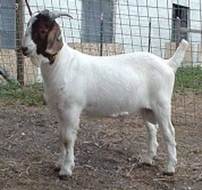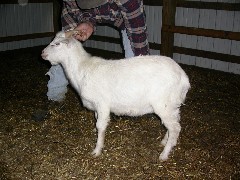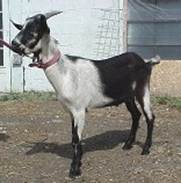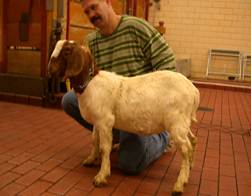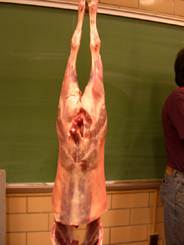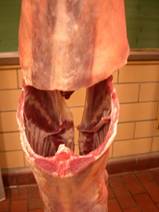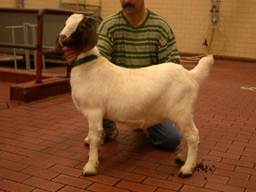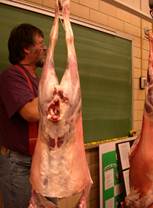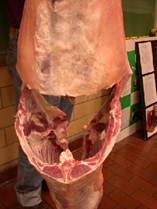Education
Evaluating your Market Kids
by tatiana Stanton
(Cornell Small Ruminant Extension Specialist)
"Market" kids are weaned kids that have been sufficiently finished to go direct to consumers rather than needing to be feed up prior to marketing. Market kids are often described by their USDA selection grade (amount of meat on them) and by their body condition (amount of fat on them). Different markets have different preferences with regard to selection grade. In addition, the amount of condition desired on a goat can vary substantially depending on the market it is destined for.
Assigning selection grades
Evaluating goats for market grade and readiness is a critical skill for a meat goat farmer. There are three USDA selection grades for live goats. These grades are supposed to be based on the meat type conformation of the goat (how thickly muscled is it regardless of fat cover). Selection 1 goats should have a pronounced bulging to the outside hindleg, a full, rounded backstrip and a moderately thick outside shoulder. Selection 2 goats have moderate meat conformation while Selection 3 have inferior conformation.
Selection Grade 1 |
Selection Grade 2 |
Selection Grade 3 |
|
|
|
Some buyers will also put in a 4th grade for very unhealthy goats. Utility or "cull" goats are goats that are being culled for a serious unsoundness or appear very unthrifty.
It is difficult for weaned market kids from dairy goat breeds originating in the Alps to grade Selection 1 because their muscles tend to be very long and lean in appearance. Some Nubian, La Mancha and Kiko kids show more bulge to their muscles while Boer X kids and certain strains of myotonic goats such as the Tennessee Meat Goat have more potential to reach Selection 1. However, management and health are major influences on selection grade. Also, even though fat covering is not supposed to be a consideration, muscles with some fat covering tend to look thicker. Selection grades do not always go side by side with customer preferences. Just because a goat is Selection 1 does not mean it will be the optimum goat for a specific market. The customer's desires with regard for age, sex, carcass weight, and fat covering must be met.
Determining market readiness
You always need to consider the special needs of the marketing channel you are working with when determining whether your kids are "market ready". Even though selection grades are supposed to be scored without consideration of fat cover, you may find that body condition (fat covering) influences your decision on whether your kids are ready for your market.
In the example below, both Boer X market kids may qualify as Selection 1. However, the kid in the top row has little or no surplus fat. He may be "market ready" if you are being paid by live weight and he was cheaper to raise than the more finished kid below. This is especially true if he is being slaughtered on-farm or at a live animal market by ethnic customers who want no excess fat and plan to consume the meat without sudden chilling of the carcass.
However, he has two disadvantages compared to the goat in the bottom row if you are paid by his hanging carcass weight rather than by live weight and if he is to be slaughtered and chilled at a conventional slaughterhouse for sale to a restaurant or retail outlet. First, his dressing percentage and hence his carcass weight and the price you received would have been better if you had let him fatten a few more weeks. Secondly, his carcass (despite having as much muscle or more than the other kid) lacks almost any protective fat covering. It will chill rapidly when put in the cooler and be highly susceptible to cold shock. Cold shock (contraction or shortening of the muscles from rapid chilling) may toughen his meat.
His readiness for market depends on which of these channels you have targeted. He may be perfect if your buyer is a live animal market worried about quick weight losses on fatter kids once they are purchased live and held for slaughter until the perfect direct consumer comes along. However, this kid is probably being slaughtered a little prematurely if your buyer plans to butcher him immediately and sell the chilled carcass to a restaurant chef putting a top priority on tenderness. In contrast, the bottom kid is probably less optimal for the first market but excellent for the second.
LEANER KID |
||
|
|
|
SLIGHTLY FATTER KID |
||
|
|
|

